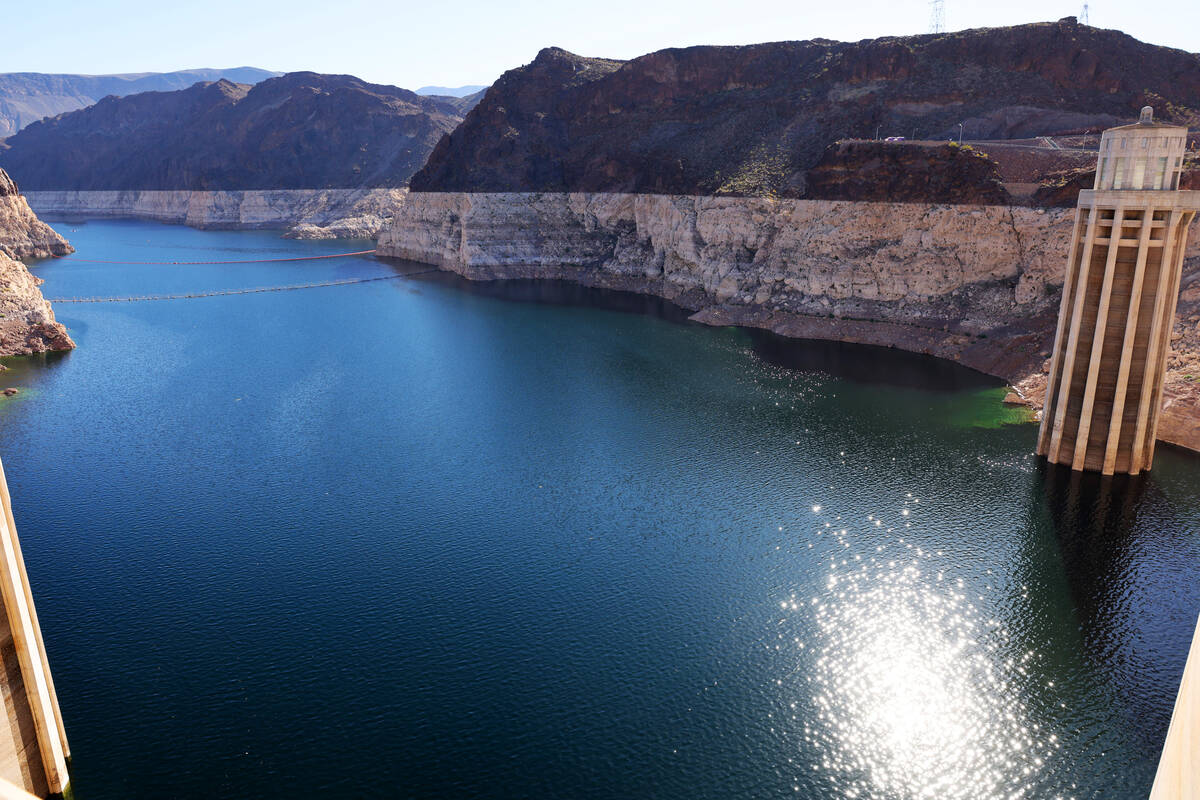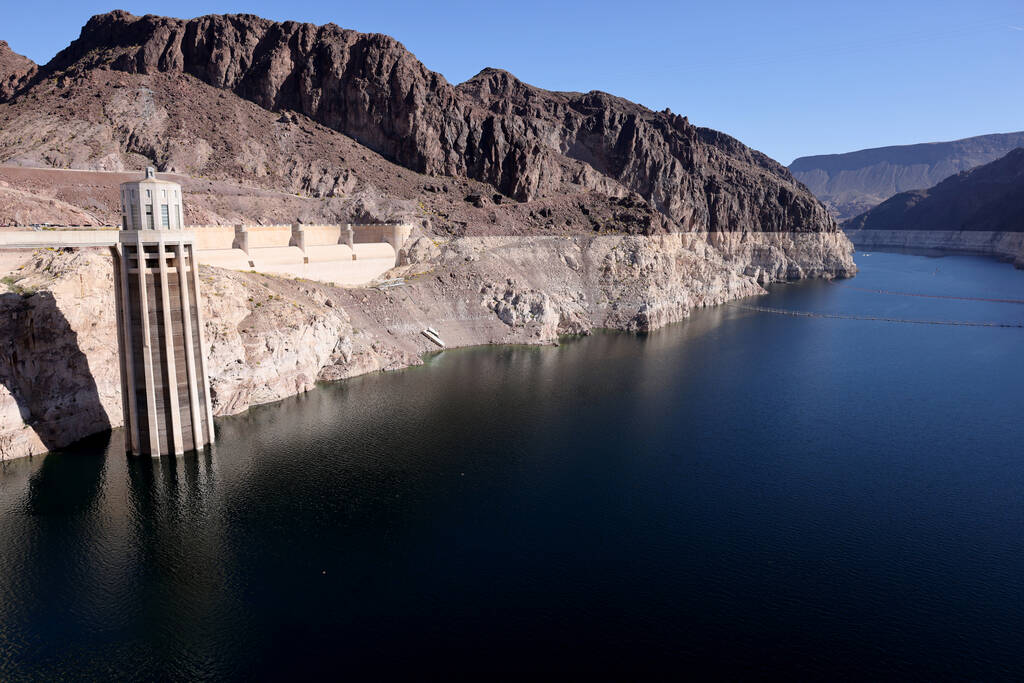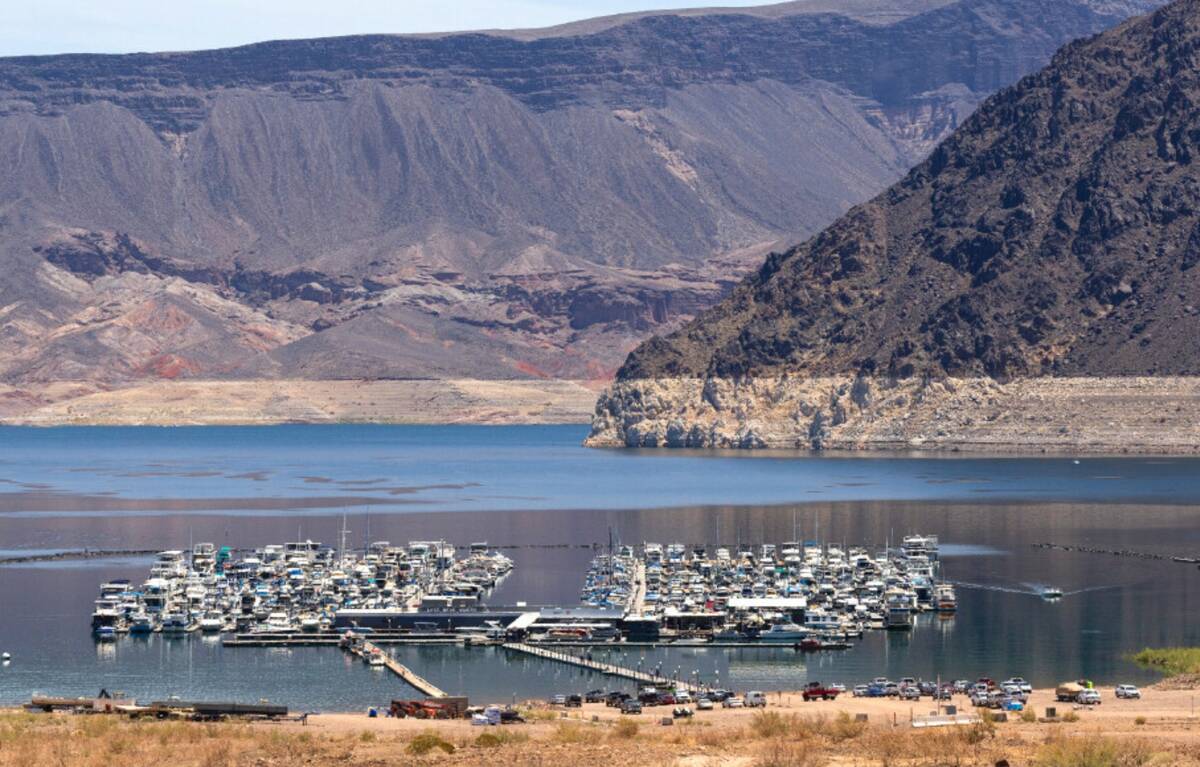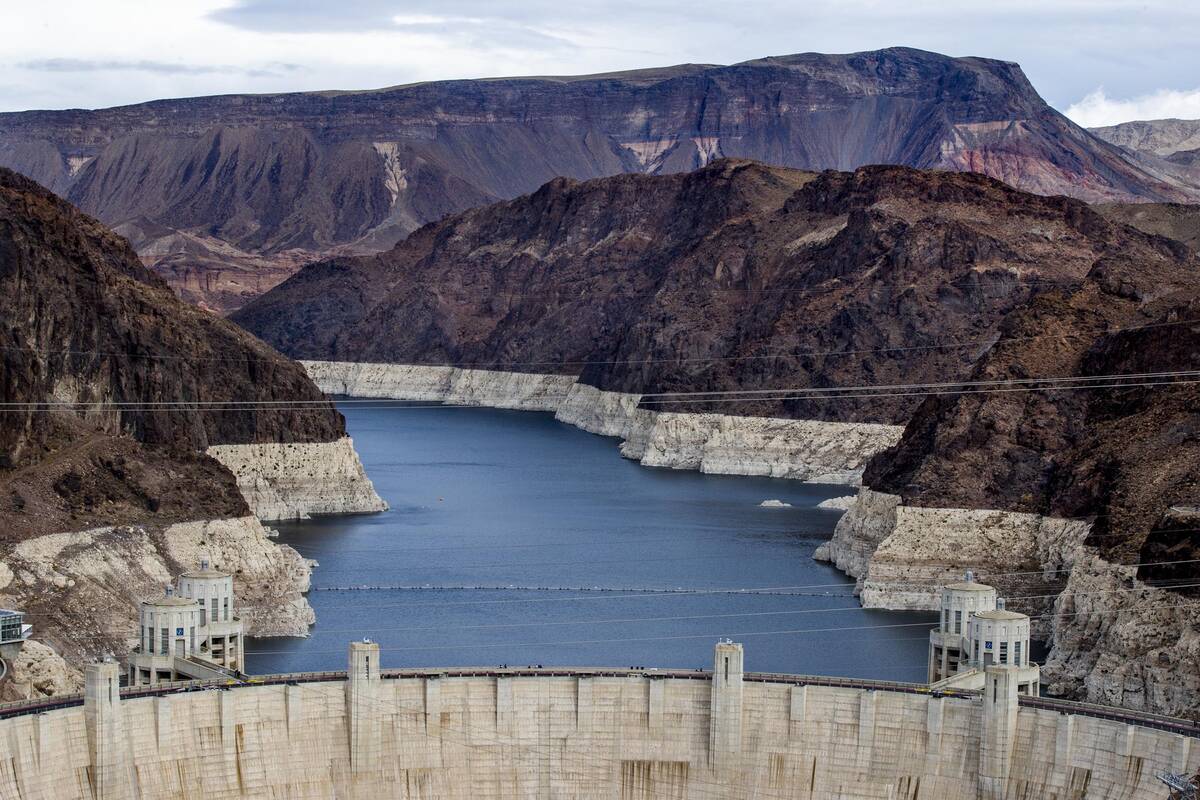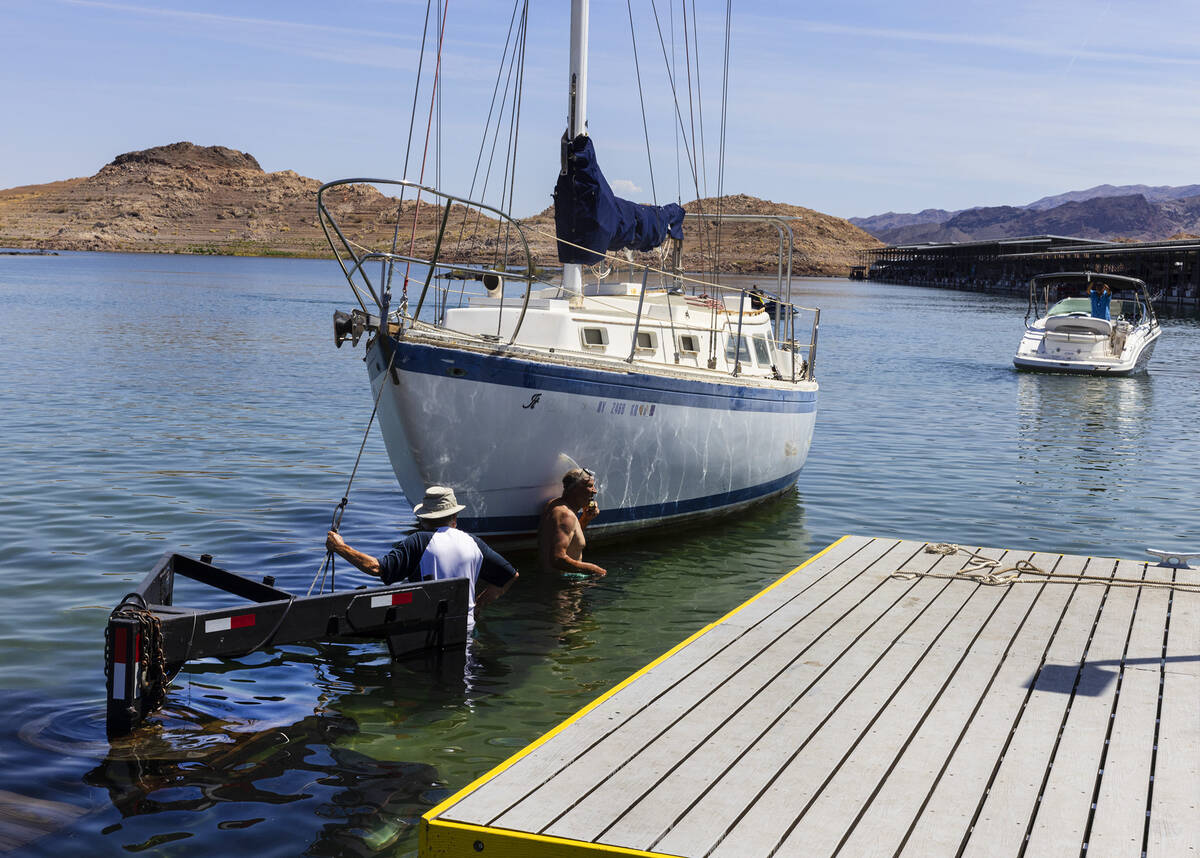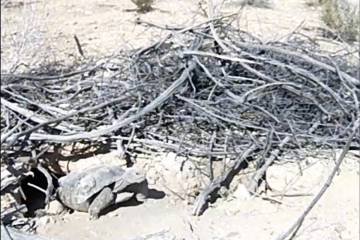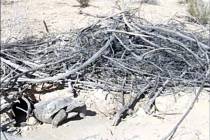5 Southern Nevada water issues to watch in 2024
It was just 18 months ago when the commissioner of the Bureau of Reclamation warned that the Colorado Water River system was in danger of collapse unless wholesale water use reductions were enacted — cutbacks much bigger than the system has ever seen.
Water shortages and demand on the Colorado River Basin will require reductions in water use of 2 million to 4 million acre-feet in 2023 to preserve “critical levels” at Lake Mead and Lake Powell, Commissioner Camille Calimlim Touton told the Senate Committee on Energy and Natural Resources Committee in mid-June 2022.
The chief Las Vegas water executive put it another way:
“We are 150 feet from 25 million Americans losing access to the Colorado River, and the rate of decline is accelerating,” John Entsminger, general manager of the Southern Nevada Water Authority, told the committee.
Fast forward to the end of 2023.
Mother Nature, collective actions by state and local governments and federal spending combined to make 2023 a good year for the major source of Southern Nevada’s water supply — Lake Mead and the Colorado Water River system.
The most obvious improvement was excessive snowfall across much of the West last winter that helped the lake gain more than 20 feet in depth. That bought time for officials to continue their search for cooperative solutions to bolster a watershed that cannot support the millions of people who depend on it for life-sustaining water given our vastly drier climate.
The past year has been a brief reprieve, nearly all water experts agree.
The growing challenges of millions of Americans living with a decreasing water supply have far from disappeared.
Developments in 2024 will have an impact on our water. Here are five issues to watch for:
1. Snowfall well below last year
Unlike last winter, snowfall in the watershed that feeds Lake Mead is below normal this winter. So far, that means we’re back to the norm nearly every year since the turn of the century.
Winter snowmelt in 2023 was 145 percent above normal. Combined with reduced water usage downstream, the runoff allowed Lake Mead to rise to 34 percent full with Lake Powell at 37 percent. Months earlier, both major reservoirs had dropped to about 25 percent capacity, putting energy production at risk for Glen Canyon Dam at Lake Powell.
The bulk of winter is ahead, but if snowfall reverts to what has been the yearly below-normal pattern, the runoff will not keep up with the demand.
2. Operation rules being revised
Decades-old rules that regulated Colorado River water usage are being revised by the Bureau of Reclamation and the many entities involved.
Current guidelines established in 2007 expire at the end of 2026, but more than two decades of drought conditions that sharply cut water flows “pose unacceptable risks to routine operations of Glen Canyon and Hoover dams,” state a revised document released in October.
The hope is to have new guidelines in place as soon as possible. Operating from updated guidelines will allow smarter decisions on water use.
3. Federal spending
The Bipartisan Infrastructure Law is providing more than $8 billion to help fund improvements and efficiencies in water systems over the next five years.
In short, the Biden administration is using a two-pronged approach: (1) paying various entities to use less water by buying their water rights, and (2) providing millions for programs to improve and upgrade water systems.
Paying entities to not draw the water they have been entitled to combined with environmental restoration and conservation projects should increase water levels in the Colorado.
4. States working together
After several months of inaction on the June 2022 request from the federal government to come up with an agreement on record water use reductions, the three lower basin states — Nevada, California and Arizona — developed a plan during 2023 to conserve 3 million acre-feet by 2026, a decline of 14 percent across the Southwest. By fall, the three states had already saved a million acre-feet, according to Bronson Mack, outreach manager for the Southern Nevada Water Authority.
A mid-December announcement was but one example. Several agencies agreed to reduce water consumption by 634,000 acre-feet over the next two years. The agencies include the Imperial Irrigation District, the Coachella Valley Water District, the Quechan Indian Tribe, the Palo Verde Irrigation District, the Bard Water District and the Metropolitan Water District of Southern California.
The working-together approach includes learning from the success of others and adopting some best practices.
Southern Nevada has recycled the vast majority of its indoor water for decades. California is now, perhaps a community at a time, adopting such a practice.
On Dec. 18, California regulators approved new rules to let water agencies recycle wastewater and put it right back into the pipes that carry drinking water to homes, schools and businesses.
It’s a big step for a state that has struggled for decades to secure reliable sources of drinking water for its more than 39 million residents. And it signals a shift in public opinion on a subject that as recently as two decades ago prompted backlash that scuttled similar projects.
“This reflects the advancements made in water recycling and reuse over the decades, as well as the public’s increased understanding of water stewardship and the need to maximize water supplies in a safe and sustainable manner,” SNWA’s Mack said. “As Southern Nevada continues to recycle and reuse nearly all of its treated wastewater collected from indoor water use, we know firsthand the value of water recycling to extend water supplies.
Mack noted that the SNWA has partnered with counterparts in California to develop a large-scale water recycling program that will reuse treated wastewater within California that is currently discharged to the ocean. California’s new draft regulations regarding water recycling support that project.
“As a project partner, Nevada will receive access to additional water resources from California’s water allocation from Lake Mead. So, this recycling project in California has a direct benefit to Southern Nevadans,” Mack said.
5. Boulder City water use
At the request of Boulder City, the SNWA is conducting a feasibility study on options to reuse treated wastewater within the community.
For more than 50 years the city has used water from Lake Mead before treating it lightly and pumping it to evaporation ponds. The community uses between 1 million to 1.5 million gallons a day before it is lost to the atmosphere rather than being recycled like other Southern Nevada government entities do by sending some 2 million gallons a day through the Las Vegas Wash back to Lake Mead. Each gallon that goes back into the lake allows Southern Nevada to use another gallon from the lake.
It is presumed that Boulder City officials would make a decision after feasibility results are released and take action on using its water more efficiently. Years ago, the SNWA said it would pay for the changes, but Boulder City officials could not agree on a plan of action.
Contact Marvin Clemons at mclemons@reviewjournal.com.



